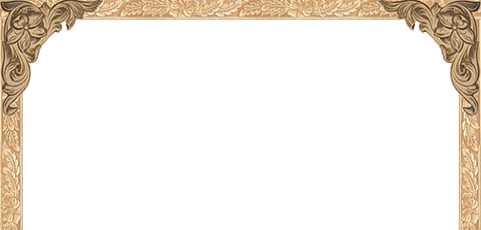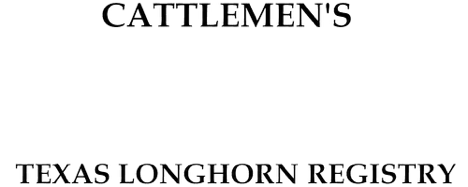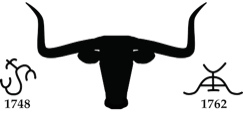Cattlemen's Texas Longhorn Registry
Cattle Registration
All Texas Longhorn cattle that pass the requirements for registration in CTLR are welcome. Herd history is taken into consideration along with phenotype and genotype.
CTLR Registered Federal and State Herds
The entire herd of cattle owned by the State of Nebraska at Fort Robinson State Park in Crawford is registered with the CTLR with full pedigree records. This herd was previously owned by the federal government and housed at Fort Niobrara National Wildlife Refuge in Valentine, Nebraska. The entire federal government-owned herd of Texas Longhorns at the Wichita Mountains Wildlife Refuge in Cache, Oklahoma was registered with the CTLR through 2002 prior to their management change to natural selection. The State Longhorn herds in New Mexico at the Farm & Ranch Heritage Museum in Las Cruces and Texas at the Big Bend Ranch State Park were registered in the 1990s. Animals purchased from the Wildlife Refuge, Big Bend Ranch State Park and New Mexico FRHM must pass visual inspection and a DNA test to qualify for registration. The Official State of Texas Longhorn Herd at Fort Griffin State Historic Site and San Angelo State Park contains some CTLR registered animals. They are using CTLR registered bulls. Female offspring of two registered parents are eligible for subsequent registration. All others must go through the inspection/DNA process to qualify.
Requirements for Cattle Registration
We have undertaken the arduous project of updating our rules and bylaws that were first written 29 years ago. This will take some time before complete and ready to publish. However, be it known registration requirements no longer include a hot-iron holding brand and private herd number. Branding, be it hot iron or freeze are optional methods for breeders to positively identify their individual animals. Responsibility for positive ID is placed on the seller of an animal. Methods are at the discretion of the applicant for registration. The CTLR cannot certify pedigree or registration eligibility without a positive ID. Other acceptable methods include ear tags with holding brand imprint and individual number, earmarks in addition to an individual number ID method, and photo record of the calf at the side of its dam. Breeders may choose to use electronic tags to assist in their own records keeping, but data must be printed hard copy and submitted with photographic identification, as the CTLR makes no requirement for members to invest in electronic readers. Tattoos and metal tags due to their difficulty to read are acceptable ID methods when accompanied by photographic records. Best practice for cattle that do not possess distinctive markings or color patterns is a brand or ear tag, as not to mistake it for another individual with similar coloration. When ear tags are lost, it is the responsibility of the owner to replace them before registration can be transferred to a buyer.
The CTLR is an open registry offering registration eligibility not only to offspring of two CTLR registered parents but also to animals that pass both a visual inspection and DNA test that fall within the acceptable range of the rest of our registered cattle, regardless if the parents are registered. Female progeny of CTLR registered sires and dams are eligible for registration as subsequent registrants, with no need for genetic and visual inspection. Because all bulls' genotypes are on file with either Neogen/GeneSeek, Inc. or the Veterinary Genetics Lab (VGL) at UC Davis, the CTLR no longer accepts subsequent offspring from "Multi-sire" herds. All calves conceived in herds with more than one bull must have their sire verified through either Neogen/Igentiy SeekSire ($15) or VGL parentage ($30).
Male progeny of CTLR registered sires and dams must be DNA tested and visually inspected after two years of age. DNA mapping of bulls from registered parents is performed by GeneSeek, Inc. ($50). DNA mapping of males and females from unknown pedigree or unregistered parents is performed by the Veterinary Genetics Lab (VGL) at UC Davis ($120).
Visual inspection is conducted initially by a team of CTLR inspectors. Texas Longhorns should look like Texas Longhorns. If in the opinion of CTLR inspectors, an animal does not exhibit characteristics of Texas Longhorn cattle or if an animal exhibits characteristics of another breed of cattle, that animal shall be disqualified from eligibility for registration in the CTLR.
Following the visual appraisal, approved animals have a DNA sample collected and sent to a CTLR approved genetics testing laboratory. Results from the test indicating no evidence of impurity then permit that animal to be registered with the CTLR as a true-to-type full-blood Texas Longhorn.
The CTLR uses DNA analysis as a powerful tool to guide the conservation of the original Texas Longhorn breed. DNA results help guide breeders as they select animals that contribute to the future of the breed and prevent its extinction. Early in the development of the DNA profile of the conservation Texas Longhorn the results helped guide and validate the important steps of evaluations based on herd history and visual appraisal.
By late 2019 the CTLR had assembled over six hundred genotypes from conservation Texas Longhorns using Single Nucleotide Polymorphisms (SNPs). Individual animals can be analyzed by placing their results along a linear scale that compares them to other breeds and distinguishes breed influences by a percentage of influence from the various breeds and branches of cattle origins (indicine, Iberian, Northern European, and African).
The CTLR also uses a separate mitochondrial DNA analysis that tracks influences that come from the maternal side, and a similar separate analysis of the Y chromosome of males that tracks the paternal side. These two can both track any introgression from influences foreign to the traditional breed.
These analyses are then all combined to derive a proportion of an individual animal's genetic makeup that comes from the different bovine breed origins. The percentage that falls within the conservation Texas Longhorn can then be used to drive breeding and conservation decisions.
In addition to helping assign animals into the traditional Texas Longhorn conservation breeding group, the results also validate the parentage of the animal by matching it to its sire and dam. This assures that pedigrees are accurate, which is essential for managing the breeding of a rare breed. In most breeds the error rate in breeder-assigned sires is about 15%. DNA validation removes this source of errors and guarantees that all animals have accurate pedigrees and can contribute to meaningful conservation breeding programs.
Acceptable Breeding Methods
Live cover, Artificial insemination, Embryo transfer
Female cattle produced through artificial insemination and embryo transfer must be parentage verified by Neogen/GeneSeek for subsequent registration eligibility. All intact bulls must pass a DNA analysis and visual inspection after their second birthday.
Fee Schedule
Registration
Subsequent Females
Initial Registrants and All Bulls
Inspection
$15.00 each, any age
$25.00 each, any age
Travel and lodging expenses may be shared by breeders from a given area.
Please submit fees from the Mercantile page on this website.


